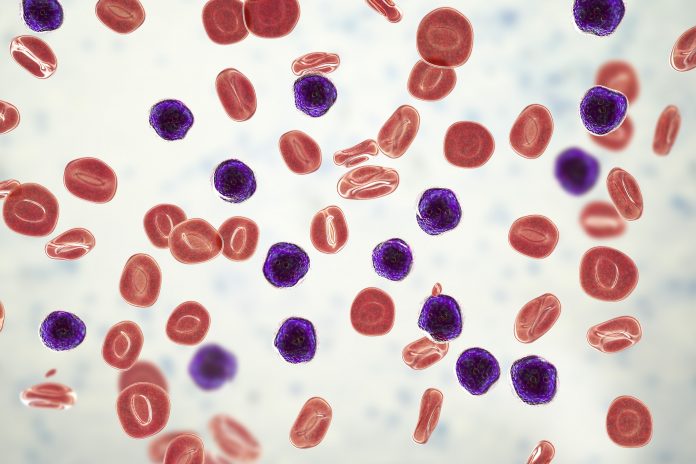
Investigators at the Children’s Hospital of Philadelphia (CHOP), St. Jude Children’s Research Hospital (St. Jude) and the Children’s Oncology Group (COG), have shown that non-coding DNA is responsible for as much 60% of the genetic changes that drive T-lineage acute lymphoblastic leukemia (T-ALL), an aggressive and high-risk form of the disease. The researchers say their study, published this week in the journal Nature, marks a significant paradigm shift in understanding the genetic drivers of T-ALL for the ongoing treatment of patients.
“This paper is the first to transcend previous barriers and comprehensively profile the whole genome, uncovering critical insights in more than 1,300 children, adolescents and young adults with T-ALL,” said David T. Teachey, MD, director of clinical research at the Center for Childhood Cancer Research at CHOP and chair of the Acute Lymphoblastic Leukemia disease committee in the COG. “These findings are a significant clinical advancement, as the goal in treating T-ALL is to prevent relapse, which requires identifying the patients most at risk. This data now makes it possible to risk stratify patients with T-cell leukemia, identifying those with a high-risk of relapsing so we can treat them with newer or alternative medicines.”
Researchers have surmised previously that the non-coding regions of the genome played an important role in driving the growth of T-ALL and in relapse after first treatment. For their research, the 1,300 people enrolled in the study received uniform treatments, coupled with epigenomic and single-cell analyses of malignant and normal T cell precursors. Using this approach, the collaborators identified 15 subtypes of T-ALL each with distinct genomic drivers, gene expression patterns, developmental states and outcomes.
“Analyses of chromatin topology revealed multiple mechanisms of enhancer deregulation that involve enhancers and genes in a subtype-specific manner, thereby demonstrating widespread involvement of the noncoding genome,” the researchers wrote.
Current methods of risk stratification of T-ALL patients has leaned on treatment response and immunophenotype, which analyzes cell surface proteins to develop a diagnosis. This method is shown to be accurate in identifying all the known T-ALL subtypes, but hasn’t provided a method to accurately identify which patients will respond well to therapy versus those who are at higher risk of treatment resistance and relapse.
Based on the results of this new research, the investigators are strongly encouraging that their genomic approach replace immunophenotype classification. As part of the study, the team developed models that incorporate genetics and treatment response as a method to accurately risk stratify patients with T-ALL and are currently verifying these results.
“It was striking how abundant these non-coding changes were and how many of them were enhancer perturbation events, whether it was hijacking or co-option of an existing enhancer, or changes that generated a new enhancer,” said Charles Mullighan, MD, deputy director of St. Jude Comprehensive Cancer Center. “We now have a much stronger framework to take these alterations back to the lab and say now we’ve got better information to build the right models to understand the biology, and then to test therapy. We have very clear information that these are the sorts of alterations that people need to focus on to build a diagnostic test.”
The 15 subtypes identified also included previously undefined subtypes of T-ALL and refined the classification of known subtypes, showing that driver lesions, other genetic changes, and the original cell type work together to define the genomic subtype and the clinical and biological characteristics of a condition. The investigators were also able to identify a significant link between the type of genetic alterations found and patient outcomes. This new finding shows it is not only which gene is altered in the cancer cells, but also how it is altered, that helps define prognosis and chance of a cure.





